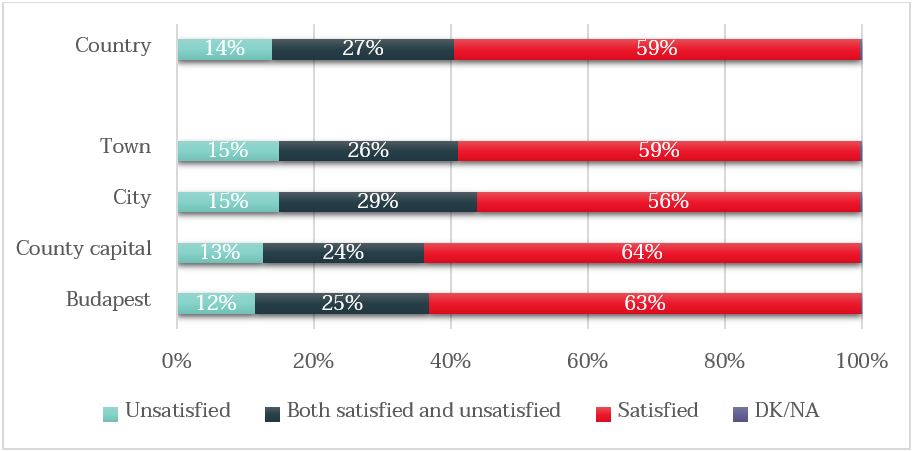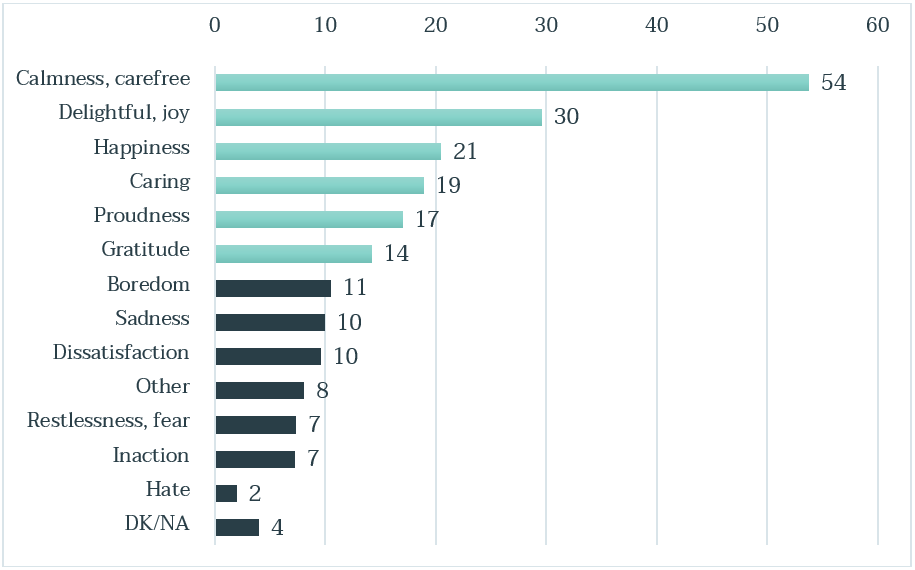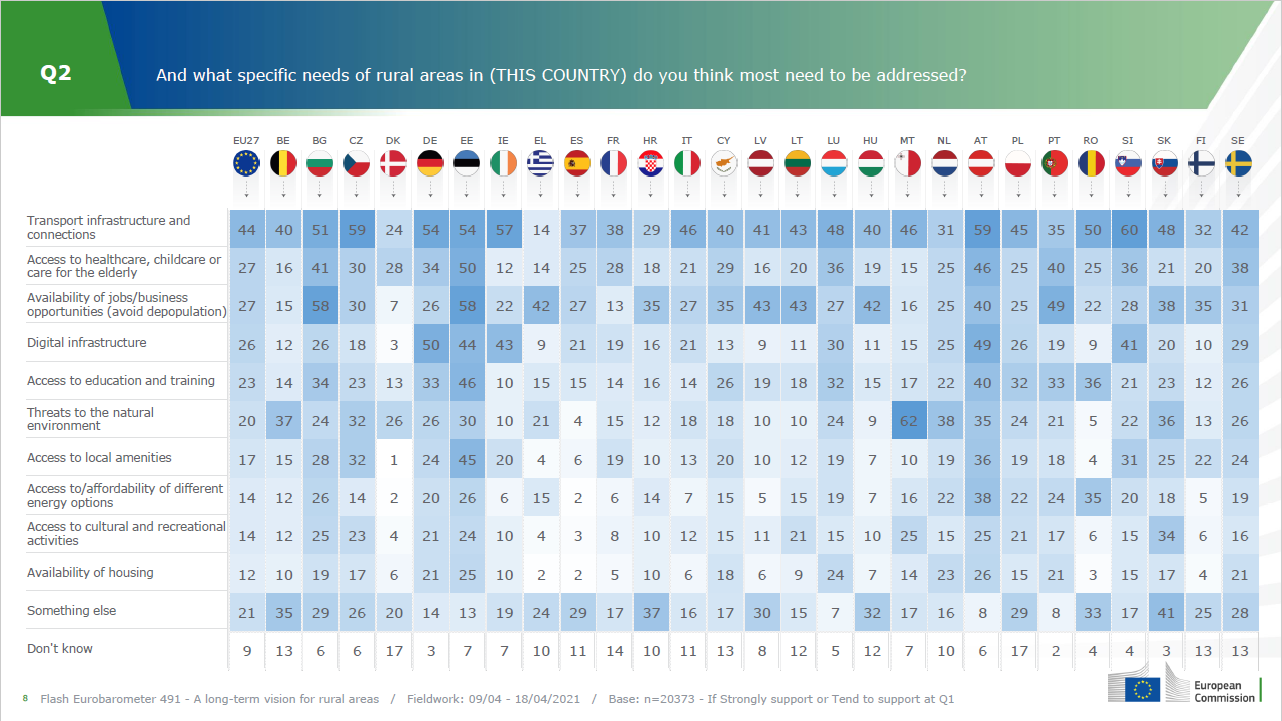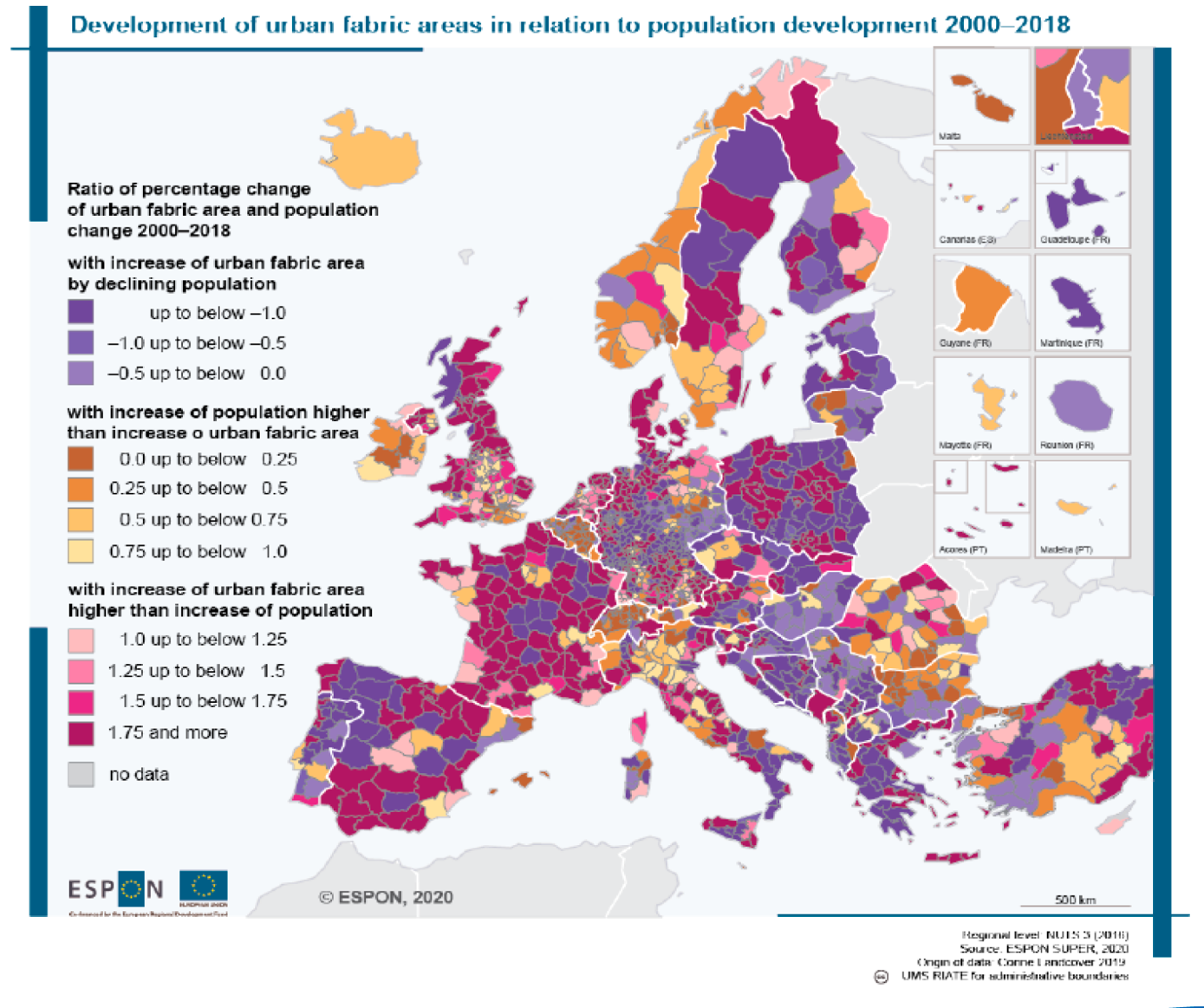The selected results of the research were presented by Viktor Wurm, senior researcher of Social Research Institute of Századvég, followed by the reflection of four guest speakers:
- János Balázs Kocsis, deputy head of the Hungarian Society for Urban Planning,
- Diana Haase, research manager, European Parliament, Committee on Regional Development,
- Mátyás Szabó, DG Agriculture & Rural Development expert, European Commission and
- Bernd Schuh, Austrian Institute for Regional Studies and Spatial Planning (ÖIR)
Take-aways of the event:
- Urbanization is pre-eminent in Hungary: between 1960-2021 urban population grew by 16%, which results in over 60% of the population living in cities.
- The Hungarian population is relatively immobile, and only about 1/5 is truly mobile.
- The majority is satisfied with the settlement they live in.
- Rural areas and the countryside are considered idyllic places in the minds of Hungarians.
- Challenges of rural development are getting more and more visible at EU level.
- The Hungarian annual migration rate to urban areas is negative.
Mr. Viktor Wurm presented research of Századvég, conducted using the CATI (Computer Assisted Telephone Interviewing) method involving 60.000 Hungarian adults. The original purpose of the research was to, through deeper understanding of the specific situation of Hungarian rural society, support the creation of a strategy that aims to increase the population holding power of the Hungarian countryside and the prosperity of Hungarian villages.
Based on the results, Hungarian society is considered to be less mobile than the EU average; however major cities hold a notable population of non-native citizens. It means that at least once in our lifetime, Hungarians intend to move. According to the willingness to move and demographic characteristics, the research showed, that while the younger population tends to move more, higher educated people are less likely to do so. Currently 19% of the population plans to move from an urban to a rural area, and the reverse is only 17%; however, plans to move in the near future are only found at 19% of the population. The most common reasons that hold people back from moving are the attachment to family or friends, financial reasons and the attachment to property or place.
1. Figure: The majority is satisfied with the settlement they live in
The perception of rural areas is positive: most respondents associated it with calmness, carefreeness, happiness and negative perceptions were quite rare.
2. Figure: Dominantly positive feelings, associations
In his contribution, Mr. János Balázs Kocsis, gave an insight about the historical patterns and trends in urban-rural migration. This is indeed a long process, starting effectively in the 19th century in Hungary. Regarding to the relationship of urban and rural areas, two parallel processes can be differentiated: peri-urbanization (a sort of mass-migration, when people move from the country-side to urban areas because of more beneficial living conditions) and sub-urbanization (defined as the migration of the middle class).
Taking a look at the tendencies of the last 25 years, we can see that new problematic areas are arising, like the gentrification of rural and suburb areas, polarization of the spatial structure and the unequal development of certain regions.
Mrs. Diana Haase highlighted the role of the European Parliament in urban and rural development, through examples and recent resolutions made by the EU.
The European Parliament plays a comprehensive role in urban and rural development in Europe. As a legislative body it co-decides with the Commission on the legislative framework for the EU’s cohesion and agricultural and rural development policy. The EU is always striving for create more synergies between rural, cohesion and fisheries policies and strengthen the cohesion among national authorities.
Based on the point of view of the Parliament, the more and more centrally made regulations will not support necessarily the expected purposes of the EU regarding to spatial development; but collecting good practices at national levels can indeed support the achievement of the goals effectively.
Mr. Mátyás Szabó from the European Commission’s DG AGRI talked about the opportunities and challenges, that rural development hold.
| Opportunities:
+ Key for ecosystem services + Bio- and circular economy + Ecological and digital transition + Increasing demands from society + Recovery from COVID 19 crisis |
Challenges:
+ Demographic challenges + Low-income levels + Limited access to services + Low connectivity + Feelings of being overlooked + Limited resilience |
Observing the Hungarian spatial structure, Hungary shows a text-book case, where the annual net migration rate to urban areas was less than zero between 2014-2019.
According to a recent research carried out by the Commission, in Hungary the availability of jobs, transport infrastructure and connection, and access to healthcare are the areas that require development to make rural areas more attractive.
3. Figure: EU countries specific need of rural areas
Mr. Szabó reflected during his presentation to what Mr. Kocsis said previously about the differences in the rural areas.
- Facing depopulation: the net migration rate is not that high in rural areas that it would be able to compensate the natural growth of population.
- Newcomers: it is a timely policy question how to keep them.
- Feeling left behind: the people who felt left behind are less than those who thinks they are not (39% yes, 61% no), but in the remote rural areas the picture is totally different; it is important to ensure that the gap does not widen even more.
4. Figure: Feel left behind by society
Mr. Bernd Schuh from the Austrian Institute for Regional Studies and Spatial Planning approached rural development from a different perspective and presented how urban-rural linkages can be depicted and therefore analyzed and compared on the EU-scale. Considering the urban-rural relationship, urban areas have higher density and migration rate, and this tendency can be observed throughout Central Europe. The level of urbanization and urban development differs by countries and regions in Europe.
According to the interpretation of Mr. Schuh, in Eastern Europe, a bizarre relationship can be observed between population and urban areas: while the fabric of urban areas is increasing, their population is declining. Meanwhile in the majority of Western-Europe the increase of urban area is higher than the increase of population.
5. Figure: Development of urban fabric areas in relations to population development 2000-2018
You can watch the event’s recording here:
Századvég Konjunktúrakutató is a member of the Századvég Group. As a key player in the domestic advisory market it seeks to support public administration and businesses in the private sector in their policy-making and strategic operations with its knowledge, experience and approach. It has eight business units: digital economy, social research, energy and climate, development policy, education, health, macroeconomics, and the agricultural sector. Századvég’s policy expert capacities are complemented by its primary research capacities, which use multiple qualitative and quantitative methodologies, including recent surveying technologies such as social listening or eye tracking analyses.





